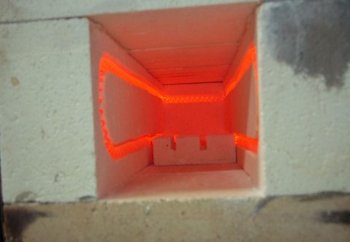Rebel_Blades
Member
This worked well the last time, so lets see if it does again. I am sure this question has been asked and answered here before. Anyway here goes. I got a piece of 440C free from New Jersey Steel Baron, and ground out a knife. Everything is good, till I got to heat treating. I am sure this is my fault, I just need to know what is the right way. I placed the knife in the oven, then punched in 1900 degrees and let it go. It takes my oven about an hour and a half to get to 1900. Once there, I waited 10 minutes then took it out. I used an oil quench, I have since found out this is not needed with 440C. Anyway I ended up with a crispy critter that is non magnetic.
I have found that I need to wrap the knife with foil. Fine not a problem I ordered some wrap last night.
I have also found that I do not need to oil quench, air quench is fine for 440C
What I need to know is the correct procedure to heat a knife made of 440C ? Knowing that my oven takes an hour and a half to get to 1900 degrees ?
Thanx in advance !
I have found that I need to wrap the knife with foil. Fine not a problem I ordered some wrap last night.
I have also found that I do not need to oil quench, air quench is fine for 440C
What I need to know is the correct procedure to heat a knife made of 440C ? Knowing that my oven takes an hour and a half to get to 1900 degrees ?
Thanx in advance !

